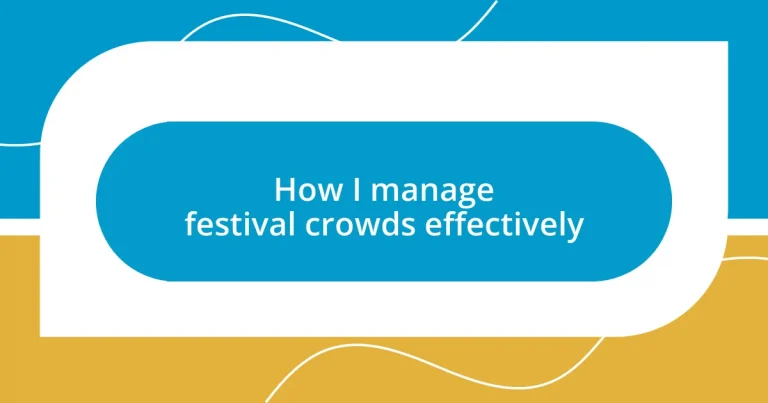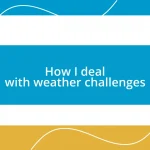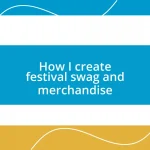Key takeaways:
- Understanding crowd dynamics, including emotional triggers and density, enhances safety and enjoyment at festivals.
- Effective festival layout planning and technology use, such as mobile apps and drones, significantly improve crowd management.
- Training staff in crowd control and actively seeking feedback post-event contribute to ongoing improvements in the festival experience.
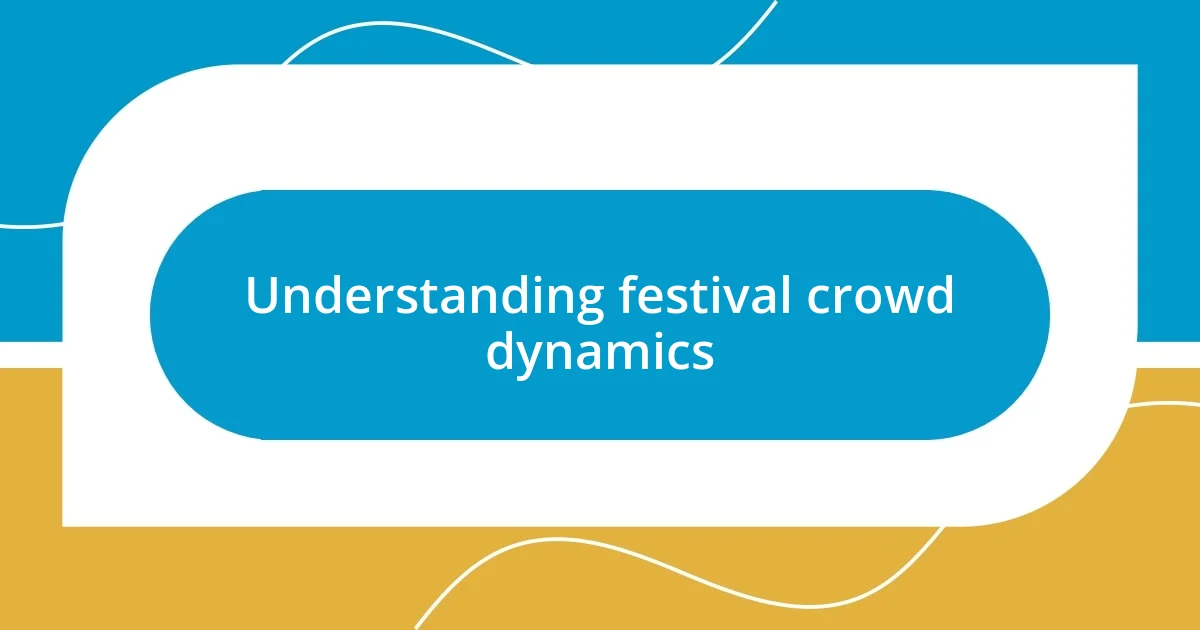
Understanding festival crowd dynamics
Understanding festival crowd dynamics is crucial for any event organizer or attendee. I remember attending a massive music festival where I was caught in a sea of people—at first, it felt exhilarating, but quickly turned overwhelming. Isn’t it fascinating how a crowd can shift from a joyous celebration to a tightly packed mass with just a few changes in movement or mood?
When you observe festival crowds, it’s clear that emotions play a significant role in dynamics. A sudden rush of excitement, like when a favorite artist takes the stage, can send waves through the crowd, often resulting in spontaneous movements. Have you ever felt that electric energy, only to realize it’s leading everyone into a tighter space? Recognizing these emotional triggers can help us predict crowd behavior and make better decisions.
Moreover, crowd density directly impacts safety and comfort. I’ll never forget the feeling of anxiety during a particularly crowded moment when the space felt almost suffocating. It struck me then how vital it is to monitor crowd density and flow. Can you imagine how quickly a fun experience can transform if there’s a lack of space to breathe? By understanding these dynamics and their influence on our collective experience, we can all enjoy festivals more safely and pleasantly.
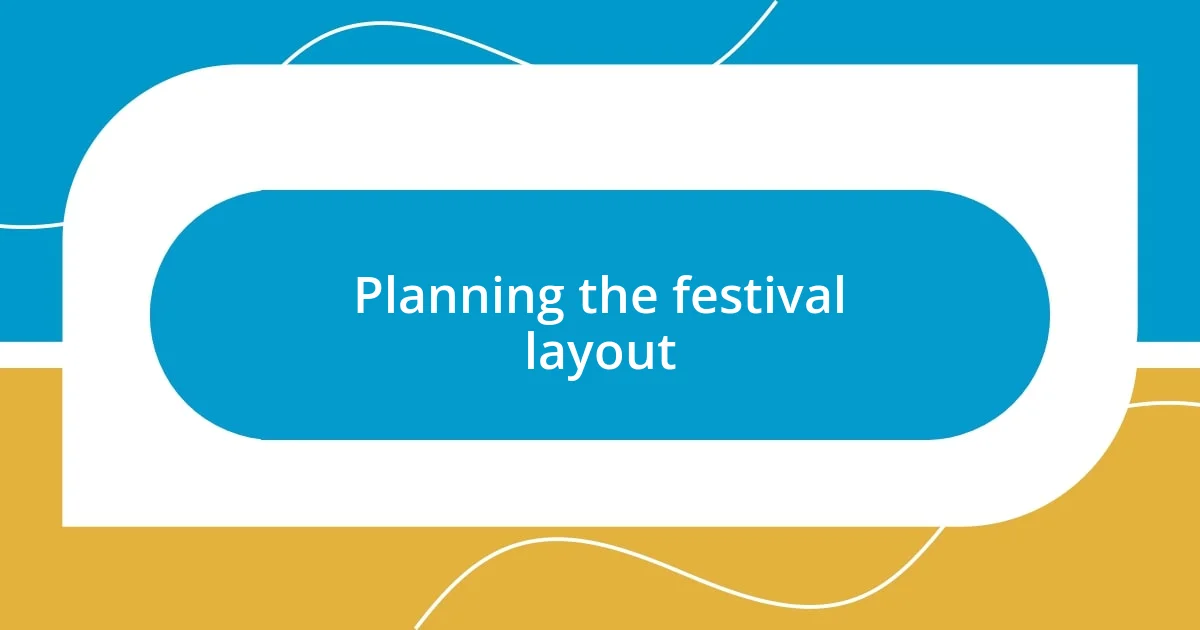
Planning the festival layout
When planning the festival layout, I’ve found that the design actually sets the tone for the entire event. I once helped organize a local arts festival where we carefully mapped out pathways to prevent bottlenecks, and the difference was palpable. Attendees felt more at ease, allowing for spontaneous encounters and a more relaxed atmosphere.
Here are some key considerations for an effective festival layout:
- Entry and Exit Points: Clearly defined points ensure smooth flow in and out of the venue.
- Zoning: Organize areas for activities like stages, food vendors, and rest zones to minimize congestion.
- Emergency Access: Plan paths for emergency services that remain clear, no matter how crowded it gets.
- Visibility: Ensure that all attractions are easily visible to avoid crowding around specific areas.
- Flow Design: Create natural pathways that guide attendees without forcing them into tight spaces.
In my experience, an intentional layout allows creativity to thrive while keeping everyone safe and comfortable. It’s amazing how a little foresight can keep the joy of the festival alive amidst the excitement.
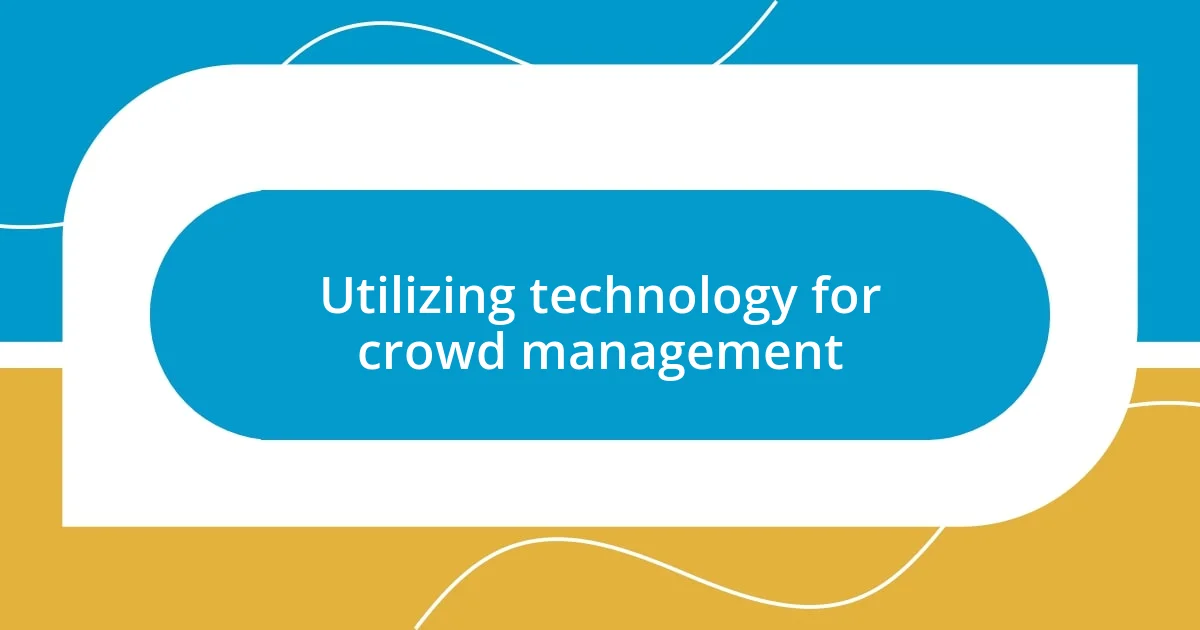
Utilizing technology for crowd management
Utilizing technology has become a game-changer in managing festival crowds effectively. I recall a vibrant festival where the use of a mobile app allowed attendees to see real-time crowd density in different areas. I remember feeling so much more at ease knowing I could choose less crowded paths, which enhanced my overall experience. Innovative solutions like these can minimize congestion and offer a higher level of comfort for festival-goers.
Moreover, employing drones for aerial monitoring has proven invaluable. During one event, I witnessed staff using drones to observe crowd flow from above, enabling them to make quick adjustments as needed. It gave me a sense of security, knowing that organizers had eyes in the sky. The ability to respond promptly to changing dynamics is crucial, especially as excitement builds during peak moments.
Finally, utilizing social media platforms for live updates can keep attendees informed and engaged. At a recent event, I noticed how organizers posted about less crowded zones or upcoming performances, allowing everyone to plan accordingly. This simple yet effective use of technology fosters a sense of community and encourages attendees to move around more freely, maximizing enjoyment for all.
| Technology | Benefits |
|---|---|
| Mobile Apps | Real-time crowd density updates for better navigation |
| Drones | Aerial monitoring for swift crowd management |
| Social Media | Live updates on crowd conditions and event highlights |
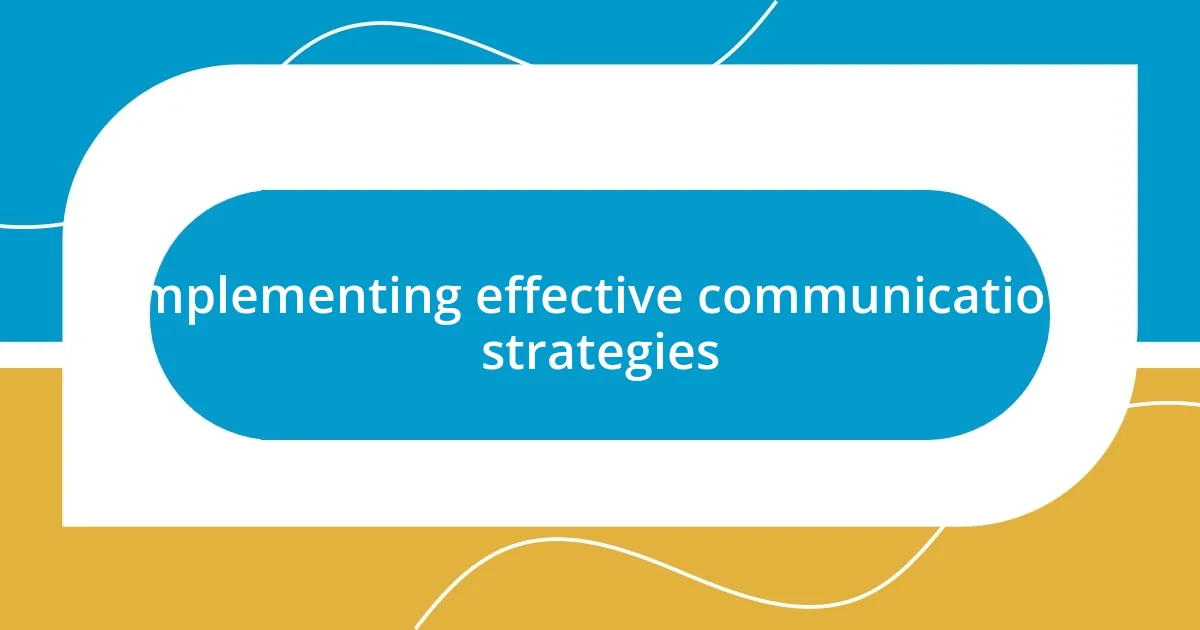
Implementing effective communication strategies
Effective communication strategies are vital to managing festival crowds seamlessly. During one particularly packed event, I experienced firsthand how crucial clear communication was when an unexpected storm rolled in. The organizers quickly set up loudspeakers and sent messages through the mobile app, guiding everyone to designated shelters. That instant clarity made all the difference, turning what could have been an anxious situation into a smooth transition.
I’ve also found that visual cues can significantly enhance communication at festivals. I remember walking through an event where brightly colored signs directed attendees towards amenities like restrooms and food stalls. It felt comforting to see everything clearly marked, which allowed me to navigate without feeling overwhelmed. These simple yet effective guides minimized confusion and kept the energy positive throughout the day.
Moreover, regular updates can keep the audience engaged and in the loop. At a recent festival, I thrilled in receiving real-time messages about upcoming performances or schedule changes. It felt like I was part of a shared experience with fellow attendees, keeping spirits high even as the crowds swelled. I often wonder—how can we continue to innovate our communication strategies to make every festival feel even more connected? The journey towards perfecting communication is ongoing, but each small step contributes to a more enjoyable atmosphere.
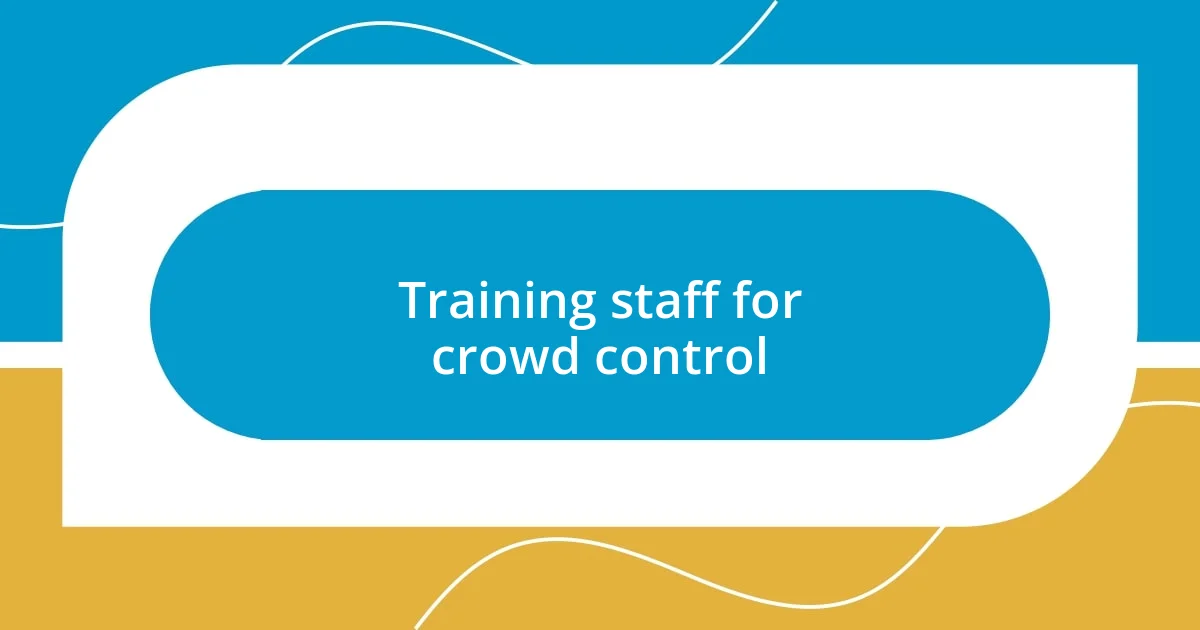
Training staff for crowd control
Training staff for crowd control is essential for ensuring a safe and enjoyable festival experience. In my early days of festival organizing, I saw the impact firsthand when the team underwent specialized training in crowd psychology. It really struck me how understanding human behavior can lead to better decision-making during peak times. After all, how can we expect staff to manage crowds effectively if they don’t grasp the underlying dynamics at play?
I’ve become a firm believer in role-playing exercises during staff training. I remember the first time we simulated various crowd scenarios, and it was eye-opening. Seeing my team navigate through a sudden surge of festival-goers helped them gain confidence and develop strategies in real time. The thrill of those exercises was palpable, as it not only prepared them for actual events but also forged a stronger bond among team members. Isn’t it fascinating how a little creative training can result in a more cohesive team?
Finally, I always emphasize the importance of ongoing communication during training sessions. Just last season, we incorporated feedback loops where staff could share insights about their experiences on the ground. The benefits were immediate; staff felt valued and empowered, which translated to better crowd management. It’s incredible how fostering a culture of openness can strengthen the team’s effectiveness under pressure. Have you ever noticed how well-equipped teams can transform the festival atmosphere? The right training makes all the difference.
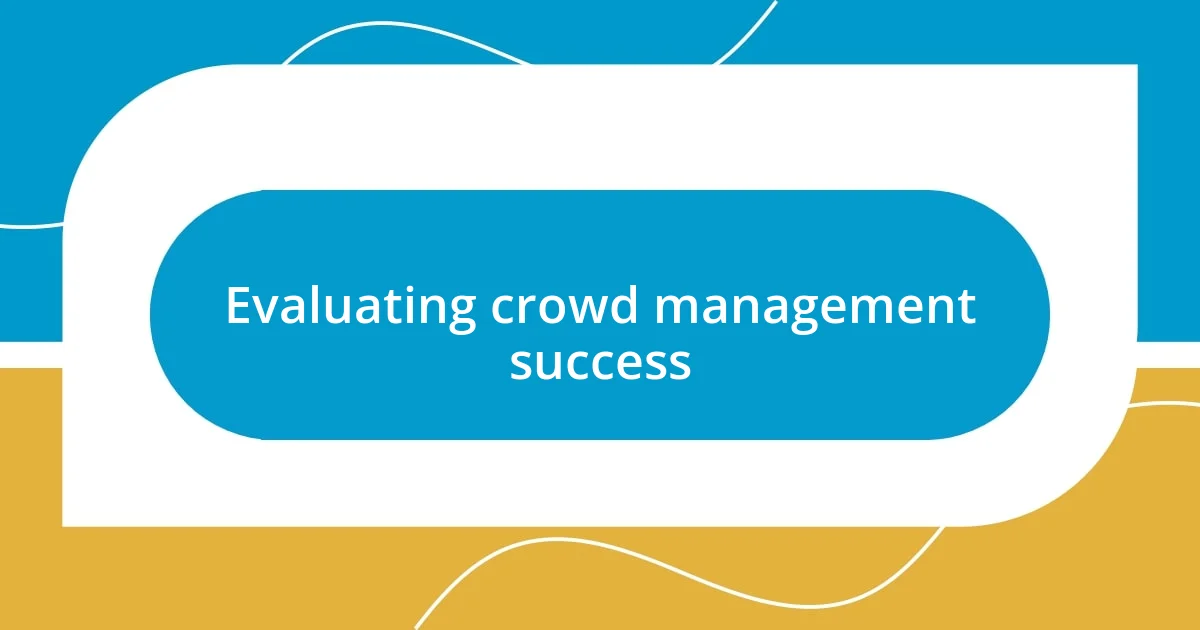
Evaluating crowd management success
Evaluating crowd management success hinges on both quantitative metrics and qualitative feedback. After a particularly high-energy festival, I took the time to review attendance numbers alongside crowd flow patterns. It was enlightening to see how the right strategies not only boosted attendance but also reduced congestion in key areas, proving that effective crowd management can enhance the overall vibe of the event.
Feedback is another critical component. I vividly recall one festival where we handed out short surveys to attendees as they exited. Their responses offered invaluable insights into what went well and what could improve; it was a relief to hear that many appreciated the designated entry points we had established, which effectively minimized chaos. Engaging with festival-goers post-event gave me a sense of connection and responsibility—how else could we make their experiences even better?
I also believe in the power of personal reflection. After each event, I set aside time to contemplate what the crowd dynamics taught me about human behavior. There’s something profound in recognizing patterns and anticipating the needs of attendees; it keeps me motivated to explore new strategies. Have you ever noticed how reflecting on experiences can spark new ideas? For me, each festival becomes a learning opportunity, making the next one even more successful.












